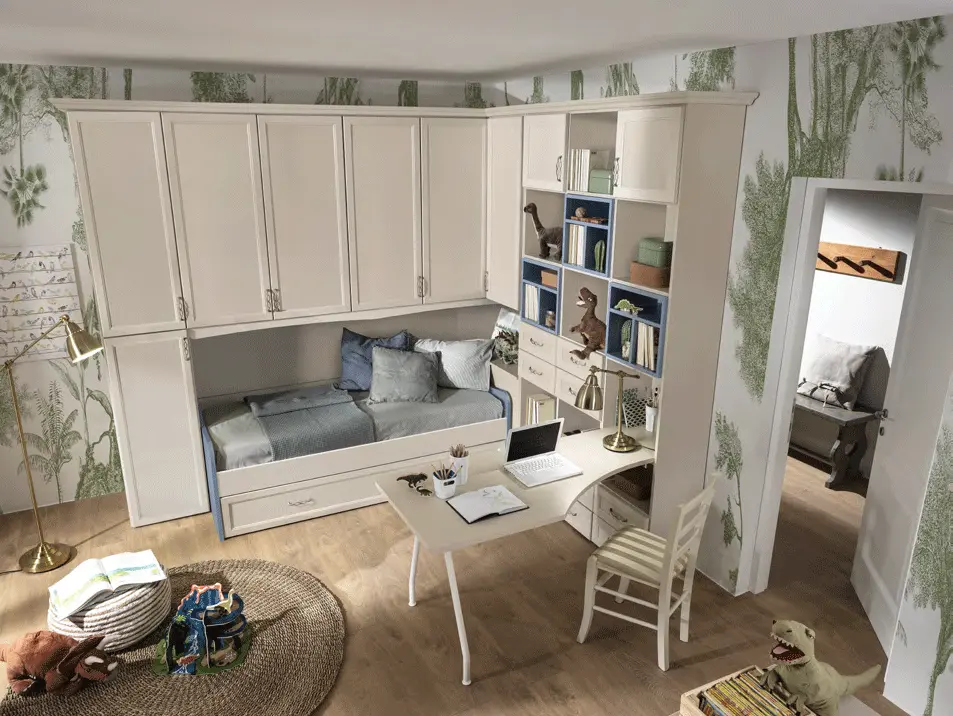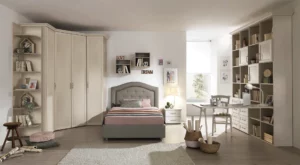Choosing the Perfect Kids Beds for Your Child

Choosing the right bed for your child might feel like a monumental task, but it doesn’t have to be overwhelming. A good kids bed not only provides comfort but also enhances safety, promotes better sleep, and even complements your child’s bedroom style. Whether you're transitioning from a crib to a big-kid bed or simply upgrading, making the right choice is crucial.
In this guide, we’ll cover everything from safety considerations to different bed types, and we’ll help you understand the factors to weigh before making your purchase. Let’s dive in!
What to Consider Before Purchasing Kids Beds
When it comes to kids beds, you’ll quickly realize that there’s more to it than just picking the most visually appealing option. There are several factors that can make or break your child’s bed, and knowing what they are can save you from unnecessary frustration later on. Here’s what you should keep in mind:
1. Safety Features
Safety is always the first thing to think about, especially for younger children who may roll out of bed in the middle of the night. For toddlers and younger kids, look for beds with guardrails or side rails to prevent falls. If you're choosing a loft or bunk bed, check that the ladder is secure and the top bunk has high enough guardrails.
Additionally, make sure that the bed’s materials and construction meet safety standards. Beds made from durable wood or metal are preferable as they offer better sturdiness, especially with kids who might jump or climb on their bed.
2. Size of the Bed and Room
The size of the bed will affect not only how your child sleeps but also how much space is available for play or storage. While a twin-size bed is usually sufficient for most children, make sure the bed size suits both your child’s current size and their potential growth.
Before purchasing, measure your child’s room to ensure there’s enough space for the bed without making the room feel cramped. If space is tight, a loft bed or a bunk bed can be a great solution for maximizing floor space.

3. Material and Durability
Since kids are active and prone to playing and jumping around on their beds, durability is a must. Choose a bed that can stand up to the daily wear and tear. Solid wood and metal frames are some of the most durable options, offering long-lasting use even under rough handling.
Look for beds made with non-toxic paints or finishes, especially for younger children who are still exploring the world around them. Always check that the bed meets or exceeds safety standards set by relevant authorities like the Consumer Product Safety Commission (CPSC).
4. Design and Theme
The design of the bed should match both the space and your child’s personality. If your child has a favorite character or theme, such as princesses, superheroes, or animals, there are plenty of themed options to choose from. However, if you want something more versatile, consider neutral-colored frames or beds that can grow with your child, easily transitioning into a more mature room design as they age.
Additionally, think about whether the bed has extra features, such as built-in storage or a trundle bed, which can be handy for storing toys, books, or even accommodating sleepovers.
5. Budget Considerations
Kids beds can range from affordable options to luxury pieces. Setting a budget beforehand will help narrow your choices and ensure that you’re not spending more than necessary. While you may be tempted to splurge on a fancy, themed bed, consider if that’s what your child will actually use and enjoy long-term. Simpler designs that are durable and adaptable might be better investments.
Types of Kids Beds
Kids beds come in all shapes, sizes, and styles. Here’s a breakdown of the most popular types, so you can choose the one that fits your child’s needs best.
1. Platform Beds
Platform beds are a simple, low-profile option that doesn’t require a box spring. They provide a sturdy foundation for the mattress and are often easier for younger children to get in and out of. These beds come in various materials, including wood and metal, and are available in a variety of designs to suit different tastes.
2. Bunk Beds and Loft Beds
For siblings sharing a room or for parents looking to maximize floor space, bunk beds or loft beds are a fantastic solution. Bunk beds can be stacked to save space, while loft beds raise the sleeping area off the ground to create additional space beneath for storage or play. Just be sure that the bed is sturdy, and the safety features—such as guardrails—are properly installed.
3. Toddler Beds
When transitioning from a crib to a bed, a toddler bed is a great option. These beds are lower to the ground, making it easier for little ones to get in and out. Most toddler beds also come with safety rails, which can help prevent your child from falling out of bed during the night. These beds often fit crib-sized mattresses, so you can use the same mattress from the crib.
4. Storage Beds
Storage beds are ideal for smaller rooms where space is limited. These beds feature built-in drawers or shelves that allow you to store clothes, toys, or bedding. Storage beds are often platform-style, meaning they don’t require a box spring, and they can be a practical solution for keeping a room neat and organized.
Frequently Asked Questions About Kids Beds
What type of bed is best for a small room?
If you’re working with limited space, consider a loft bed or a storage bed. Loft beds elevate the sleeping area, leaving plenty of room underneath for storage or a play area. Storage beds, on the other hand, provide built-in drawers for organizing toys and clothes.
Are themed kids beds a good idea?
Themed beds can be fun and engaging, but they may not be practical long-term as your child grows. If your child is passionate about a specific character, a themed bed might be a good choice, but keep in mind that they may outgrow it quickly. Consider choosing a versatile, neutral bed frame that can adapt to their changing interests.
How do I ensure the bed is safe for my child?
Check for safety features such as guardrails, sturdy construction, and non-toxic materials. For younger children, low-profile beds are ideal, while older kids may enjoy bunk or loft beds as long as they come with secure ladders and guardrails.
What’s the best material for a kids bed?
Solid wood and metal are often the best materials for kids beds, as they provide the durability needed to withstand the wear and tear of daily use. Be sure to choose a bed made from non-toxic materials, especially for younger children.
Final Takeaways
Choosing the right kids bed isn’t just about selecting the most eye-catching design. It’s about finding a bed that offers safety, durability, comfort, and functionality. Whether you go for a bunk bed, a platform bed, or something with built-in storage, make sure you consider your child’s age, the room size, and your budget. With the right bed, your child will have a comfortable, secure, and inviting place to sleep and play for years to come.